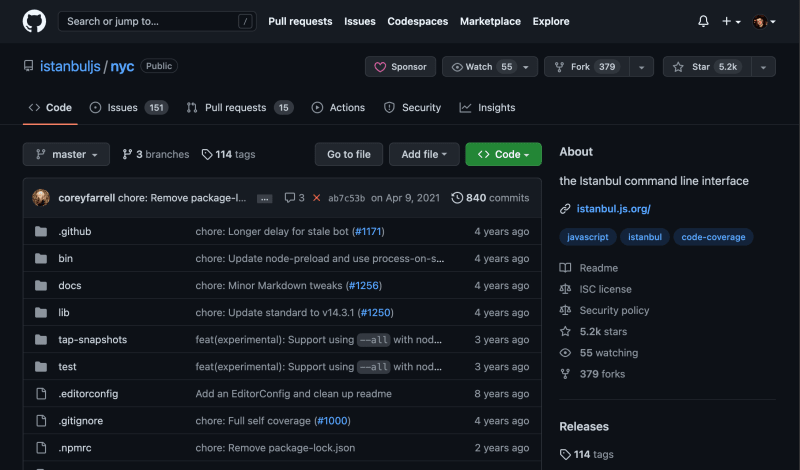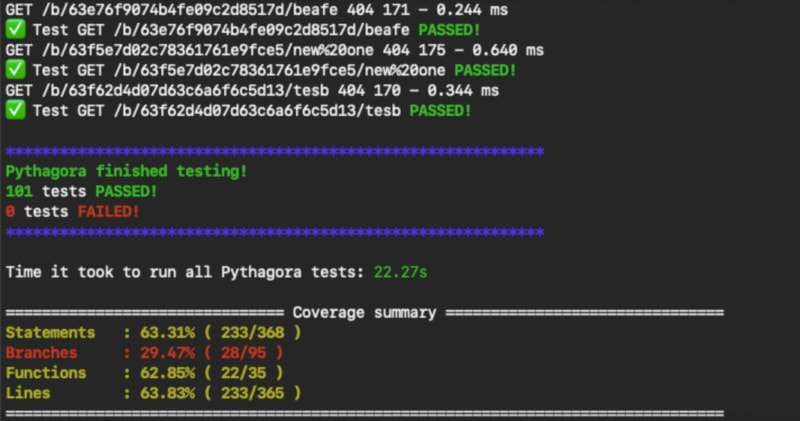Introduction
One of the biggest areas I’ve seen evolve over the past couple of years is test automation. It has become an essential aspect of building and maintaining apps, especially web apps. Automated testing allows developers to catch errors and bugs in their code before they are deployed into production and with all the tools available it has become super easy to get it set up and running. In this post, we will discuss five essential concepts for creating automated tests for Node.js apps.
Unit testing with Jest
Unit testing is a type of automated testing where individual units or components of a software application are tested in isolation to ensure they are functioning correctly. Unit testing is essential because it allows developers to test individual pieces of code in isolation before they are integrated into the larger application. This helps catch errors early in the development process, making it easier to fix them and prevent larger issues from occurring down the road.
Jest (developed by Facebook) is the most used library for creating automated unit tests because of its simplicity, speed, and ease of use. It provides a comprehensive set of features for testing, including mocking, snapshot testing, and code coverage. Mocha and Ava are the other two very popular libraries used for unit testing. Here is a great tutorial on how to get started with unit testing in Jest.
Code coverage with nyc
Code coverage is a measure of how much of an application’s code is being tested by automated tests. It is essential to track code coverage because it allows developers to see which parts of their code are not being tested and may contain bugs. Code coverage tools can generate reports that show which lines of code were executed during the tests and which were not.
Tools such as nyc (formerly Istanbul), Codecov, and Jest’s built-in code coverage feature can be used to generate code coverage reports for Node.js applications. Here is a great tutorial about how to create unit tests with Jest and enable code coverage with nyc.
Integration testing with Pythagora
Integration testing is a type of automated testing that tests how different parts of an application work together. It is different from unit testing because it tests the integration of multiple units, rather than testing each unit in isolation. Integration testing is important because it ensures that different parts of the application can work together seamlessly.
Easiest way to create integration tests is with test generating tools like Pythagora. It generates integration tests for Node.js applications by recording server activity without a developer having to write a single line of code. Basically, developers just need to run their server with Pythagora and make API requests either with cUrl, Postman or just by clicking around the frontend of the app. With it, developers can get from 0 to 90% code coverage in just one hour of recording. Pythagora has the NYC code coverage mentioned above integrated so it will generate reports automatically. See a quick 3 minute demo video of Pythagora here.
Load testing with Artillery
Load testing is a type of automated testing that tests how an application performs under high load or stress. Load testing is important because it ensures that an application can handle a large number of users or requests without crashing or slowing down. Load testing tools can simulate high levels of traffic to an application and measure its performance under different levels of stress.
Tools such as Artillery and Apache JMeter can be used for load testing in Node.js applications. These tools make it easy for you to simulate high levels of traffic and measure the performance of their application under different conditions. Here is a great comparison between the two by Rafaela Azevedo.
CICD with Jenkins
Ok, now that you have everything you need to create tests for your app, you need to run these tests in an environment ideally before every PR so that you’re sure that your PR actually can be merged into the main branch.
Continuous Integration/Continuous Deployment (CICD) tools that help you with that. They automate the process of building, testing, and deploying applications. They help to ensure that code changes are tested thoroughly before they are deployed to production, reducing the risk of errors and bugs.
Popular CICD tools for Node.js applications include Jenkins, Travis CI, and CircleCI. These tools integrate with version control systems like Git and automate the process of building, testing, and deploying applications. Here’s a great step-by-step tutorial by Bibin Wilson on how to get started with Jenkins.
Conclusion
Creating automated tests for backend development in Node.js applications is crucial to ensure the quality and reliability of software applications. By implementing unit testing, code coverage analysis, integration testing, load testing, and CICD tools, developers can ensure that their code is thoroughly tested before being deployed into production.
However, it is important to keep in mind that code coverage is not the only metric for evaluating the effectiveness of tests. Incorporating negative tests, along with other evaluation metrics, can help catch edge cases and ensure complete test coverage. With proper testing techniques and evaluation metrics in place, developers can build and maintain high-quality Node.js applications that meet the needs of their users.










Top comments (0)